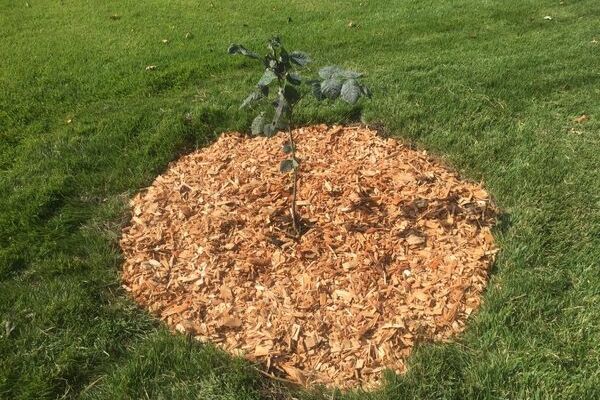Plant Trees for the Environment, But No Need to Use Root Stimulants Now

There is still time to plant shade trees this fall, but know that fertilization and the addition of root stimulant products have been shown to have little or no effect on how quickly a tree establishes.
However, the unnecessary use of these products could lead to an increase in nutrients in surface water that can impair water ecosystems. Fertilizer and root stimulant products are not recommended unless a soil test indicates they are needed.
Planting and successfully growing trees is important to ecosystems. Large shade trees can help waterways by intercepting rain to slow it down and help soak it in so less runs off. Tree roots also filter potential pollutants from stormwater and hold soil in place to prevent erosion.
Successful tree establishment is determined by many factors. September through October is a good time to plant trees. Root growth is faster due to soils being warm and moist. In spring, soils are colder and often too wet which limits oxygen needed for root growth.
Faster root growth in fall, along with subsequent root growth in spring, helps tree roots establish quicker and young trees are better able to withstand summer heat and drought.
Some trees are not recommended for fall planting because they do not produce much root growth in fall. Trees to avoid planting during fall are redbud, Magnolia, birch, willows, scarlet oak and black oak.
Practices that will encourage quicker establishment of young trees includes loose soil to the sides of the planting hole, but not below the root ball; proper irrigation that includes keeping the soil moist, not saturated, 8 to 12 inches deep within the root ball and outside of the root ball.
Also, using a mulch ring of at least four feet and preferably six to eight feet in diameter around the tree and over the planting hole. Make sure the mulch layer is no deeper than a few inches and not piled against the tree trunk.
When planting trees, avoid the common mistake of planting too deep. Before digging the hole, locate the trunk taper on the trunk. Some soil may need to be scraped away to locate the trunk taper or where the first lateral root grows off the trunk.
Once located, only then dig the planting hole just deep enough so the bottom of the root ball rests on undisturbed soil, and after backfilling the hole with soil, the trunk or root flare will still be visible just above the soil surface.
At planting, avoid pruning. The tree needs all of the stored food in the branches as well as green leafy tissue produced next season to aid establishment. Wait a few years after planting to do much pruning except to remove double leaders or broken branches.
And again, know that research has shown there is little to no effect to using fertilizer or a root starter to soil at planting. Using these products when they are not needed could lead to an increase in surface water through runoff during rainstorms and snow melt.
This article was reviewed by Nicole Stoner
Sign up for updates from UNL Water
